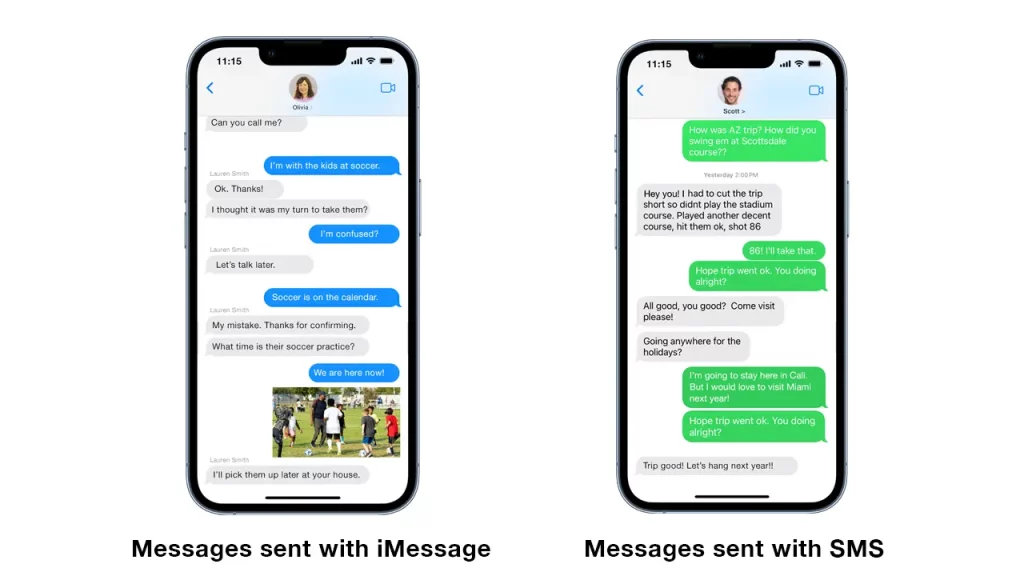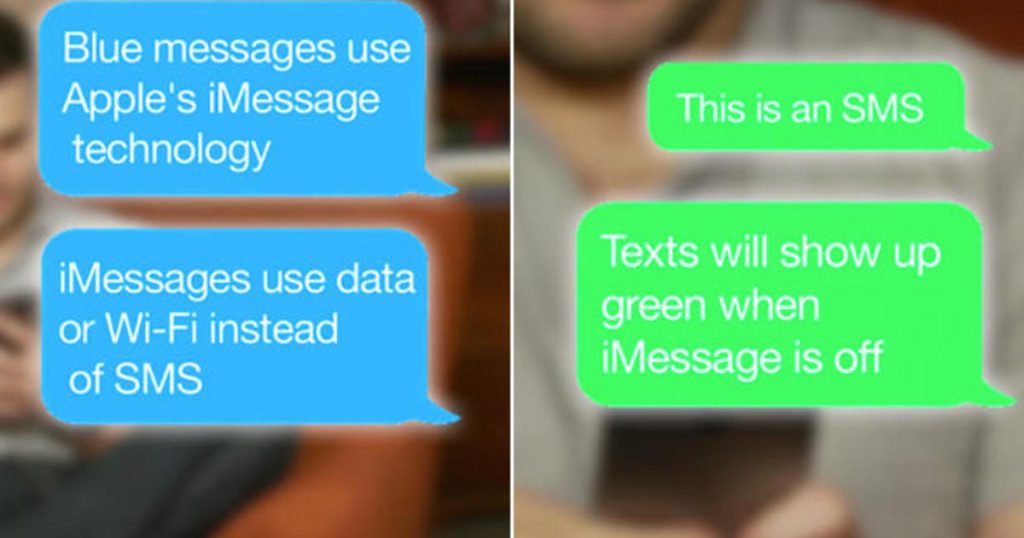Do you know why are my texts green? Have you ever wondered why your text messages sometimes appear as green on your mobile device? It’s a common issue that many people experience, and it can be quite perplexing. In this article, we’ll explore the reasons behind this shed some light on the question why are my texts green.
Key Takeaways:
- Green texts on your mobile device can be caused by a variety of factors
- The distinction between green and blue text in messaging is significant
- The choice of communication method, such as SMS or messaging apps, can affect text color
- Different devices, operating systems, and messaging platforms play a role in the appearance of green texts
- Understanding these factors can help you better navigate the world of mobile messaging and decipher why are my texts green.
The Difference Between Green and Blue Texts
When it comes to messaging, you might have noticed that some of your text messages appear green, while others are blue. What exactly is the difference between these two text colors, and why does it even matter?
The distinction between green and blue texts in messaging is more than just a cosmetic feature. It actually has significant implications for how your messages are sent and received on various devices and platforms.
Let’s start by understanding green texts. Green text typically indicate messages that are sent through the traditional SMS (Short Message Service) protocol. These messages are not encrypted and are sent over the cellular network. Green texts are usually exchanged between different phone models, operating systems, or when the recipient’s device does not support iMessage, Apple’s messaging service.

On the other hand, blue texts are specific to Apple’s iMessage service. These messages are sent over an internet connection and are typically encrypted, providing an extra layer of security. Blue texts are exchanged when both the sender and recipient have iMessage enabled on their Apple devices.
The Significance of Green and Blue Texts
The color difference between green and blue texts goes beyond aesthetics; it also determines the features and capabilities available during your conversations. With iMessage, users can enjoy advanced features like read receipts, typing indicators, and the ability to send media files. These features are not available when communicating via traditional SMS, which uses green texts.
Additionally, the color of your texts affects how you are billed for your messaging usage. Green texts, being sent through the cellular network, count towards your carrier’s SMS plan or usage. However, iMessage messages sent as blue texts are typically free when using Wi-Fi or a data connection, making them a convenient and cost-effective option for Apple users.
Understanding the difference between green and blue texts allows you to make informed decisions about how you communicate with others. Whether you opt for the traditional SMS or take advantage of the enhanced features offered by iMessage, being aware of these distinctions empowers you to choose the best method based on your preferences and the capabilities of your devices.
SMS vs. Messaging Apps: The Color Divide
When it comes to the intriguing phenomenon of green texts, the battle between SMS (Short Message Service) and messaging apps plays a significant role. These two methods of communication have their own distinct impact on the color of messages, often resulting in the mysterious green tint that perplexes many mobile users.
Let’s dive deeper into this color divide and explore why certain conversations turn green on different platforms. SMS, the traditional messaging service offered by cellular carriers, uses a different technology compared to messaging apps like iMessage, WhatsApp, or Facebook Messenger. This difference is a key contributing factor to the color variation.
When you send a text message via SMS, it typically appears as a green bubble on your recipient’s device. This happens because SMS operates through the cellular network, which bypasses the internet and works independently of specific apps or platforms. However, when both you and your recipient are using the same messaging app, such as iMessage or WhatsApp, the message color changes to blue.
The color variation between SMS and messaging apps stems from the way these platforms transmit data. While SMS relies on the cellular network, messaging apps often use internet connectivity, allowing for additional features like read receipts and multimedia file sharing.
How Messaging Apps Affect Text Color
Messaging apps utilize data connections, either mobile data or Wi-Fi, to transmit messages. By leveraging an internet connection, these apps can provide enhanced functionalities, such as typing indicators and message synchronization across multiple devices. Consequently, when using a messaging app, the messages are sent as data packets over the internet rather than through SMS, resulting in the blue color.
Furthermore, messaging apps often offer end-to-end encryption for enhanced privacy, ensuring that only the intended recipients can access the messages. This additional layer of security is absent in SMS, making it a less secure method of communication in comparison.
The color divide between SMS and messaging apps not only influences the aesthetic aspect but also affects the user experience and the features available. Understanding this distinction allows users to make informed choices about their preferred method of communication and the color of their messages.
Device Differences and Green Texts
When it comes to the mysterious phenomenon of green texts, device differences play a significant role. The color of text messages can vary depending on the operating system and messaging platform being used.

Apple’s iMessage System
Apple’s iMessage system is known for its unique blue bubble that appears when sending messages between Apple devices. However, things change when you send a message to someone without an Apple device. This is where the green text comes into play.
When an iPhone user sends a message to someone using an Android device or a non-iMessage supported device, the message is sent as a conventional SMS or MMS. These messages appear as green texts to indicate that they are being sent through traditional cellular networks rather than over the internet.
So, if you are an iPhone user and notice your texts appearing as green, it means that the recipient of your message is using a non-iMessage supported device.
Android Devices and Other Platforms
On the Android side of things, text messages are typically sent as SMS or MMS by default. Whether you’re an Android user or an iPhone user sending a message to an Android device, the messages will appear as green texts since the conversation is happening outside of the iMessage ecosystem.
Furthermore, other factors such as third-party messaging apps can also contribute to the display of green texts. Different messaging apps may handle message delivery differently, affecting the color of the text in the recipient’s device.
While green texts may seem like an aesthetic distinction, they can be a helpful indicator when it comes to understanding the nature of your conversations. It helps to recognize the device differences and the messaging platforms being used to ensure effective communication.
Conclusion
Throughout this article, we have explored the intriguing phenomenon of why are my texts green on mobile devices. By understanding the key factors at play, we can shed light on why this color variation occurs and how it can impact our messaging experiences.
One crucial aspect to consider is the messaging platform we use. While SMS (Short Message Service) messages are typically associated with green texts, messaging apps like WhatsApp and Facebook Messenger often display messages in different colors, such as blue. The choice of platform can greatly influence the appearance of our texts.
Additionally, device differences play a significant role in the color divide. Apple’s iMessage system, for example, uses a blue color scheme for messages between Apple devices, while non-Apple devices often display these messages as green. Understanding the operating system and device choices can help explain why our texts may deviate from the standard blue color.
Finally, the nature of the communication itself should be taken into account. Group chats, international messaging, and sending messages to non-iOS users can all contribute to the appearance of green texts. These factors, combined with the messaging platform and device choices, give us a comprehensive understanding of why are my texts green.
FAQ
Why are my texts green?
The green color of your text typically occurs when using SMS (Short Message Service) to send messages instead of a messaging app. This color difference is a result of the way different communication methods and devices handle messaging. Let’s explore this phenomenon further to clarify why are my texts green.
What is the difference between green and blue texts?
Green and blue texts represent messages sent through different communication methods. Green texts are usually sent through SMS, while blue texts are sent using messaging apps. Understanding this distinction is essential in comprehending why your texts appear as green on certain devices and platforms.
How do SMS and messaging apps contribute to the color divide?
SMS and messaging apps play a significant role in determining text color. SMS, the traditional texting method, often displays texts as green. On the other hand, messaging apps, such as iMessage or WhatsApp, usually present texts as blue. The choice to use one method over the other can result in a color difference in your conversations.
Do device differences affect green texts?
Yes, device differences, including the operating system being used, can influence the color of texts. For instance, Apple’s iMessage system tends to display messages as blue when sent between Apple devices. Android devices, on the other hand, may display texts as green when using SMS. Therefore, the device you use can impact the color of your texts.
Why are green texts prevalent?
The prevalence of green text is primarily attributed to the widespread use of SMS. When you communicate with someone who is not using a messaging app or an Apple device, your messages are delivered as SMS, thus appearing green. By understanding the factors that contribute to texts, you can gain insights into the nature of your conversations and the platforms being used.


